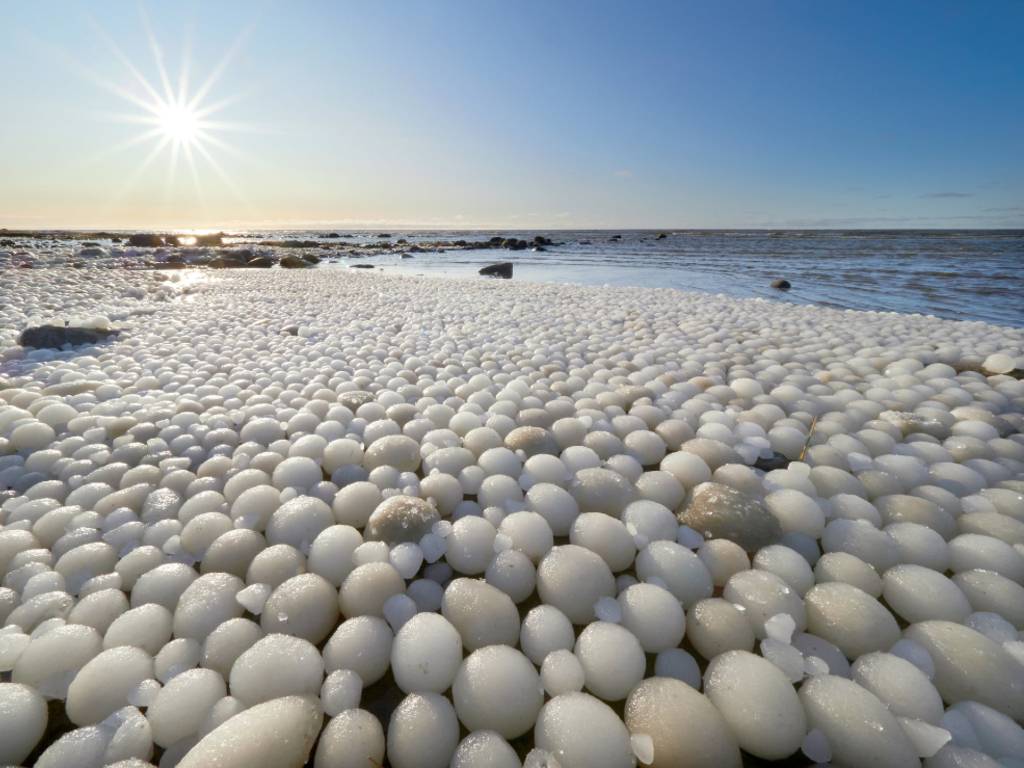 Imagine finding thousands of eggs on the beach -- only to realize that these eggs melt in your hands!
Imagine finding thousands of eggs on the beach -- only to realize that these eggs melt in your hands!
Visitors of Marjaniemi Beach in Hailuoto Island, Finland were astounded by the egg-shaped ice balls that had washed up on the shore. The balls, ranging from egg-sized to football-sized, blanketed the beach over an area of about 30 meters (100 feet).
According to BBC weather expert George Goodfellow, ice eggs are formed under cold and windy conditions from pieces of ice sheets, which are buffeted by waves and given a roughly round shape. The ice eggs grow in size as seawater freezes around them, smoothening their surfaces. The eggs are then blown or carried to shore by low tides.
Other Unusual Ice Formations
Not unlike glossy ribbons or fluffy-looking cotton candy, rabbit ice forms when the air reaches freezing temperatures but the ground has not frozen. This causes the sap inside the stems of plants to freeze and expand, creating a crack. As water seeps through these cracks, it freezes immediately, creating thin layers of ice that eventually coalesce into beautiful ribbons. Since rabbit ice formations are very delicate, they melt quickly and can best be viewed early in the morning.
Another interesting ice formation is snow rollers. Snow rollers, which look like large, fluffy, hollow marshmallows, are formed at near melting temperatures when there is a loose layer of snow on the ground. Snow is rolled along the ground by wind and grows in size the farther it goes, picking up more snow. As the snow roll gets bigger, its first layers disintegrate, making it hollow. Owing to the very specific weather conditions needed for snow rolls to form, this ice formation is relatively rare.
Other ice formations include ice circles, penitents, needle ice, frost flowers, and pancake ice. Nature is certainly wondrous. Take a walk outside and you might just glimpse these unique ice formations for yourself!
Sources: BBC, CNN, MNN, LiveScience







